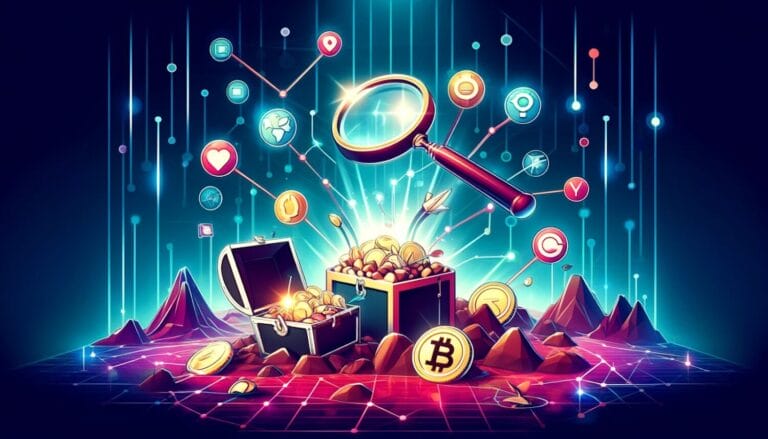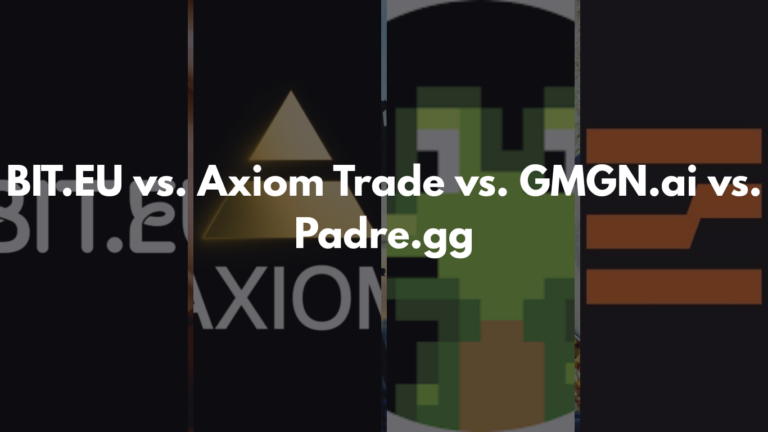The crypto world does not sleep. While traditional markets take weekends off, Bitcoin, Ethereum, and thousands of altcoins trade around the clock. Exchanges blink green and red at 2 a.m., liquidity shifts from one pool to another, and wrapped tokens appear on new chains overnight. For developers and analysts, this makes a simple problem, what is the price of Bitcoin right now, surprisingly complex.
You might think the answer is easy: just fetch the last trade from Binance or Coinbase. But look closer, and cracks appear. That last trade might be an outlier on thin volume. Another exchange may report a different number. Meanwhile, wrapped BTC is trading on Ethereum and Arbitrum at slightly different rates.
For any real application, a chart, an alert, a portfolio tracker, or even a research report, you need more than a random tick. You need an API that makes sense of the noise. And so, this blog explores the options of crypto price APIs in 2025.
Table of Contents
The hidden complexity of crypto prices
In traditional markets, the concept of “last price” has a clearer anchor. Exchanges consolidate around reference rates, and regulators enforce reporting standards. In crypto, no such authority exists. Instead, dozens of centralized exchanges compete for volume, while decentralized exchanges fragment liquidity across countless pools.
That means the price you see depends on:
- Which venue, you ask (Binance versus Coinbase versus Uniswap)
- Which chain or pool is active at that moment
- Whether you average trades or take a single last print
- How you treat obvious outliers
For a human scrolling through CoinMarketCap, the differences may not matter. But for a trading bot, an analytics dashboard, or a fund’s quarterly report, those details are critical.
This is where price APIs come in. They are the translators, smoothing chaotic trades into consistent series. Some APIs are broad but shallow. Some are narrow but lightning fast. A few aim to unify cross-chain data. The choice depends less on “which API is best” and more on “what problem am I solving.”
Bitquery
Bitquery approaches the problem from a builder’s perspective. If you want to plot a TradingView chart or trigger an alert, you should not need to stitch together raw trades. Instead, you should be able to ask for a price series and get back finished candles that are already clean, aligned, and enriched with indicators. Or even better, have a ready-made TradingView SDK.
At the heart of this is Bitquery’s Crypto Price Index.

Why it matters
- Cross-chain consistency: The Currencies model unifies native and wrapped assets. Bitcoin, WBTC, and bridged BTC collapse into one price series instead of three fragmented ones. Dashboards stay clean, and users do not ask why “BTC” shows three different values. (Bitquery explains this in their blog on DEX Price Index).
- Ready-to-use OHLC Stream: OHLCV (open, high, low, close, volume) is pre-aggregated down to 1-second intervals. Developers can use it directly to build Crypto TradingView charts.
- Indicators included: SMA, EMA, and WMA come server-side. Instead of coding your own moving average math, you request them in the same query. Consistency matters because the averages use the same cleaned trades as the candles. (See Bitquery’s tutorial on Trading Indicators).
- Filtered anomalies: Thin-market glitches, wash trades, and fat fingers are common in crypto. Bitquery filters anomalies before aggregation so candles do not spike and moving averages do not swing wildly.
- Flexible delivery: Query via GraphQL, subscribe for real-time updates with GraphQL subscriptions, or stream into a data warehouse with Kafka. The data model stays consistent across all methods.
Imagine building a portfolio dashboard. With most APIs, you would fetch raw trades, bucket them into candles, compute averages, and filter outliers. With Bitquery, you ask for ETH one-minute candles plus SMA and EMA, and the API returns exactly what you need. If later you want live updates, you switch to a subscription without changing the data structure.
This is why many builders start with Bitquery. It handles the plumbing so they can focus on user experience.
CoinGecko
Not every project needs precision candles. Sometimes what matters most is breadth. This is where CoinGecko shines.

CoinGecko’s API is beloved by hobbyists, content creators, and startups because it is simple and covers thousands of tokens. The classic “simple price” endpoint returns spot prices for multiple assets in multiple fiat currencies with one call. GeckoTerminal adds visibility into DEX pools, giving a window into early token discovery.
The tradeoff is speed and depth. CoinGecko is not real-time at the tick level, and its OHLCV support is limited compared to specialized providers. It also does not unify cross-chain assets. But if you are building a blog widget, a discovery page, or a lightweight portfolio tracker, CoinGecko is often the fastest way to ship.
CoinMarketCap
For projects that need more than just prices, CoinMarketCap (CMC) offers structure. Its API covers quotes, market pairs, circulating supply, and OHLCV history. Analysts and funds appreciate the metadata, while enterprise teams trust the brand for compliance-friendly dashboards.

CMC is less about streaming and more about research. If you want sub-second updates, you will need a socket elsewhere. But if you are writing reports, backtesting strategies, or building a product where reference data matters, CoinMarketCap is a solid anchor.
CryptoCompare
Where Bitquery abstracts away raw ticks into candles, CryptoCompare (CCData) goes the other direction. WebSocket feeds deliver trades, quotes, and order book updates across many centralized exchanges. REST endpoints cover history for backfills.

This makes CryptoCompare attractive for bots and dashboards that need to react instantly. The tradeoff is responsibility. You build your own candle engine, filter anomalies, and handle late trades. If you want to see every tick and micro-move, it is the right choice. If you want a clean chart with indicators, you will need to build more on top.
CoinAPI
Ask any developer who has integrated multiple exchange APIs. No two exchanges agree on schemas. Symbol names differ, payloads change, and edge cases multiply. CoinAPI solves this by normalizing data across hundreds of venues. You can query trades, quotes, books, and OHLCV in one consistent format.
CoinAPI is especially useful for multi-venue arbitrage or reconciliation systems. You still need to handle indicators and cross-chain unification yourself, but you avoid the adapter burden of maintaining dozens of exchange integrations.

Kaiko
Some users do not care about bots or dashboards. They care about Fair Market Value and compliance. For them, Kaiko is the natural fit.
Kaiko focuses on methodology and auditability. It provides FMV price series, deep history, and derivatives coverage, all wrapped in documentation that regulators accept. Banks, funds, and regulated fintechs lean on Kaiko for reporting and filings.
It is less about sub-second latency and more about defensible numbers. If you are running a DeFi dashboard, Kaiko is overkill. If you are preparing audited financials, it is exactly what you need.

Binance
Sometimes the fastest way to know what is happening on an exchange is to ask the exchange itself. Binance provides REST and WebSocket APIs for trades, klines, and order books.
The advantage is obvious. You get low-latency data for strategies tied to that venue. You can subscribe to streams, track order book changes, and react within milliseconds. The limitation is the scope. You only see Binance. If you want a global view, you will attach other APIs.
Many trading systems blend the two. They use Binance sockets for execution speed, then render candles from Bitquery for a consistent user experience. That way, alerts, charts, and strategies align. The UI stays smooth, while the engine under the hood responds to every tick.

Closing thoughts
Crypto pricing is chaotic by nature, but the right API stack turns that chaos into clarity. In 2025, the market will offer more choices than ever. CoinGecko brings breadth, CoinMarketCap brings structure, CryptoCompare brings speed, CoinAPI brings normalization, Kaiko brings compliance, and exchange APIs bring raw immediacy.
But when it comes to clean, cross-chain candles that are ready to plot, Bitquery’s Price Index deserves its spot at the top. It saves builders from reinventing the candle engine, keeps charts smooth, and unifies assets that exist in multiple forms. That foundation lets you focus on your product, not your plumbing.
If you want to dig deeper, Bitquery’s blog covers everything from trading indicators to mempool predictions to real-world asset analytics. These stories show how data becomes insight and why APIs are more than just endpoints.










